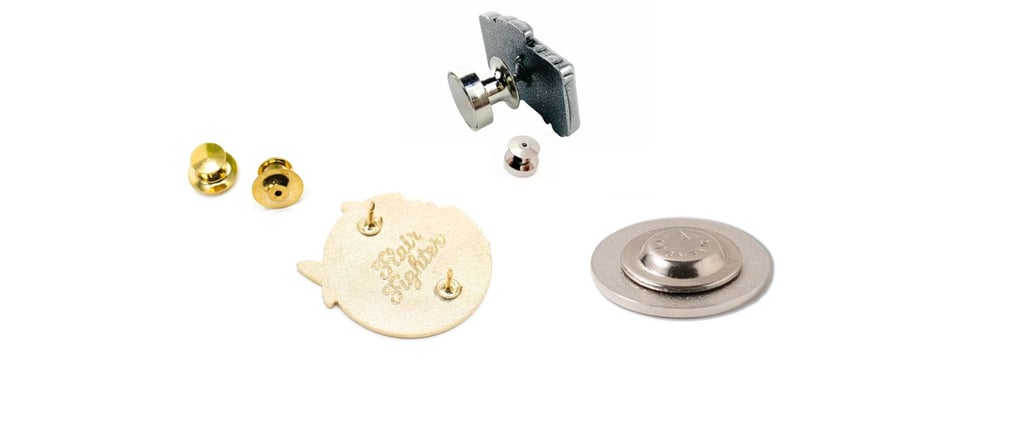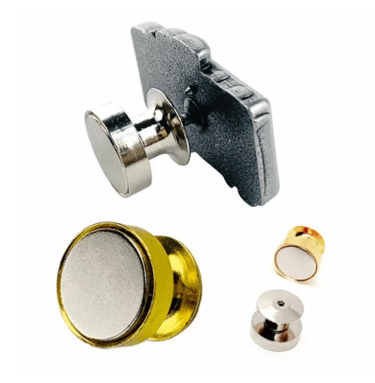Magnetic vs Traditional Pin Backings for Enamel Pins
Discover the key differences between magnetic and traditional pin backings for enamel pins. Compare their safety, cost, usability, and professional appearance to make an informed choice for your enamel pin collection.
Create Pins
3/15/20233 min read


Price, appearance, and usability are the main factors when deciding between magnetic backing and traditional pin backings for enamel pins. Magnetic pins work differently than standard pin mechanisms, so there are specific considerations to keep in mind. This guide will help you understand the differences and choose the best backing for your pins.
What You Need to Know About Magnetic Backing
Magnetic pins use strong magnets to hold the pin in place without piercing the fabric. Before choosing a magnetic backing, consider the following:
Wear with care
Strong magnets can affect small electronic devices, including pacemakers. Keep magnetic pins away from children and pets, as accidental ingestion can be dangerous.Professional appearance
Magnetic backings lay flat and avoid damaging clothing, making them ideal for suits, blazers, or uniforms. They're perfect for office wear or formal events but less ideal for active settings.Higher cost
Magnetic pins are more expensive due to the materials and strength required. Adding a magnetic backing can increase the unit cost by $0.50–$3.00, depending on quantity and supplier.Ease of use for limited mobility
Magnets eliminate the need for small clasps, making it easier for people with dexterity issues to wear pins. Single bar magnets provide the largest surface area for easy attachment.Limitations in movement
Magnetic pins are best for static or light activity. Vigorous motion or thick fabrics can weaken the magnetic connection.Bulk storage challenges
Large quantities of magnetic pins can stick together during storage, requiring extra care when handling or packaging.
Other Popular Pin Backings
Besides magnetic, enamel pins can use a variety of traditional backings. The three most common types are:
Safety Pin
Similar to a button pin, this clasp is ideal for thick fabrics or active environments. It secures the pin well but passes through fabric twice, which may leave holes.Clutch
The most common backing for lapel pins, available in metal, hard plastic, or rubber. Some are lockable for extra security, making them suitable for higher-end or collectible pins.Locking Back
Found on high-end or jewelry-style pins, this delicate mechanism ensures the pin stays in place until manually released. Perfect for uniforms or formal wear.
Which Backing Is Best for Your Pins?
The choice depends on usage, clothing type, quantity, and cost.
Magnetic: Stylish, professional, and ideal for thin fabrics like silk, cotton, or polyester. Great for office wear, name tags, or accessories where pinholes are undesirable.
Clutch/Safety Pin: More secure for active use or heavy fabrics. Suitable for uniforms, jackets, or outdoor events.
Key Factors to Consider:
Order quantity – Magnetic pins are more expensive, so bulk orders significantly increase costs.
Fabric/material – Magnets work best on thin clothing; thicker fabrics may reduce stability.
Usage scenario – Consider activity level and clothing type to avoid accidental pin detachment.
Storage and transport – Magnetic pins may need padding or separation to prevent sticking.
How to Convert a Pin to Magnetic
If you want to switch an existing pin to a magnetic backing, you have two options:
Option 1: Manual Conversion
Remove any protruding prongs using a metal cutter and smooth the surface with a sander.
Attach a strong magnetic strip using a durable adhesive.
Allow the glue to set completely before use.
Option 2: Use a Magnetic Pin Adapter
For a quicker and safer alternative, magnetic pin adapters are available. These small accessories attach directly to your existing pin without any cutting or glue. Simply clip or slide the adapter onto the pin’s prongs, and it converts your pin into a magnetic one instantly.
Display Tips: Magnetic pins, whether manually converted or using an adapter, are great for framed or foam-backed displays. Use metal strips or cardboard to keep pins aligned and secure.
Choosing between magnetic and traditional pin backings depends on your priorities:
Magnetic pins: Best for professional appearance, delicate fabrics, and ease of use.
Traditional pins (clutch/safety/locking): Better for active use, thick fabrics, and long-term security.


Custom enamel pins for artists and brands.
Copyright © 2025 Createpins.com owned by Raoin. All rights reserved. Custom Made with ❤️📧hello@createpins.com
Shipping Worldwide
Trusted by Thousands of Creators
